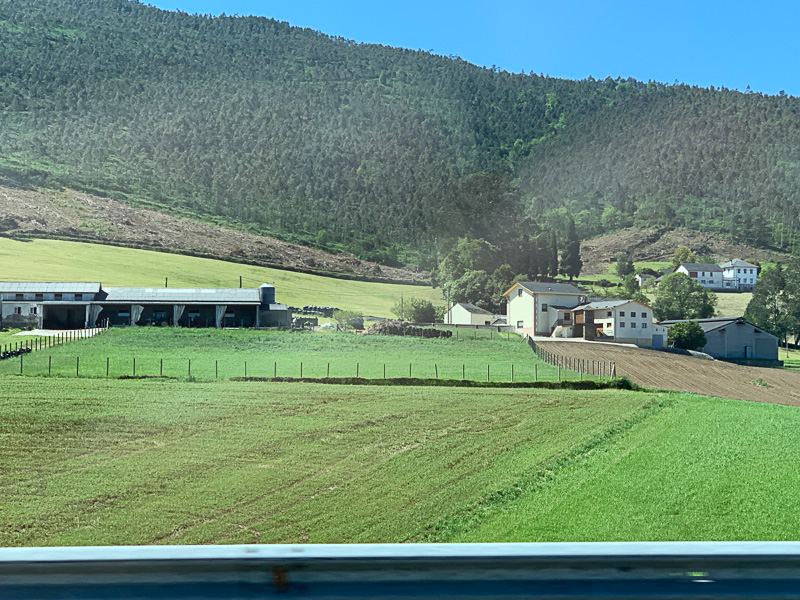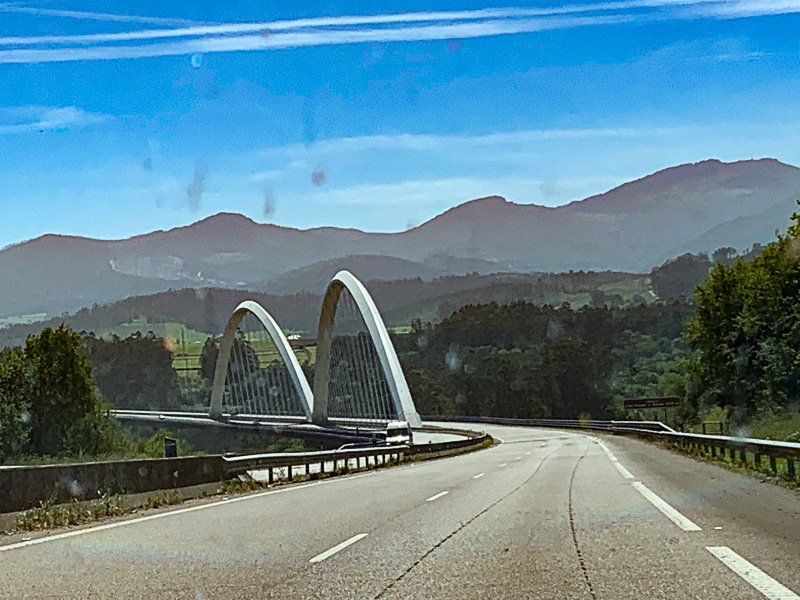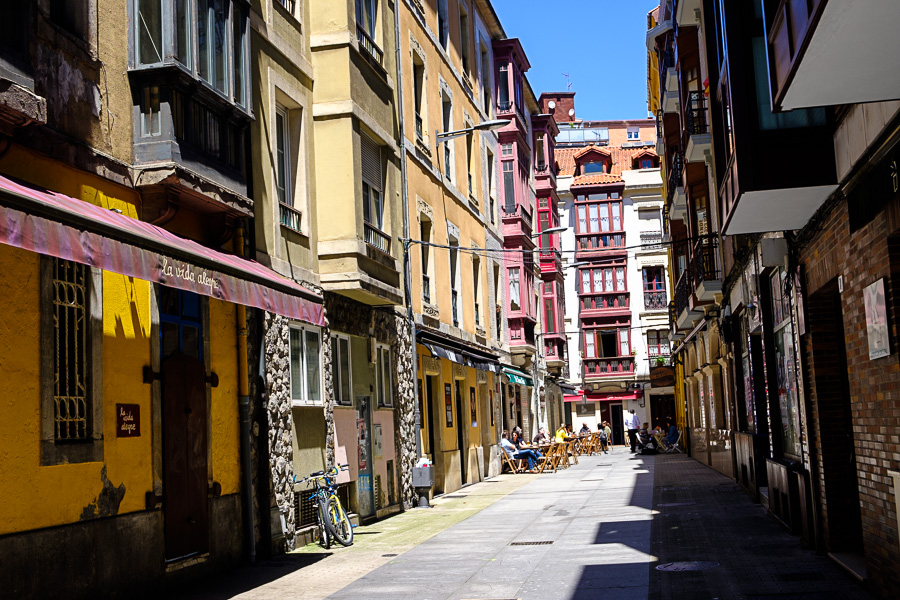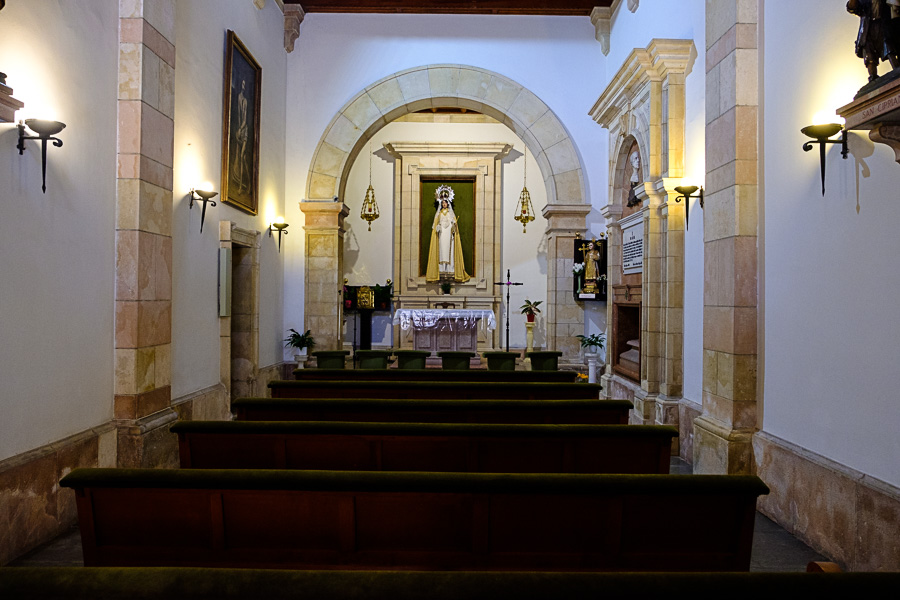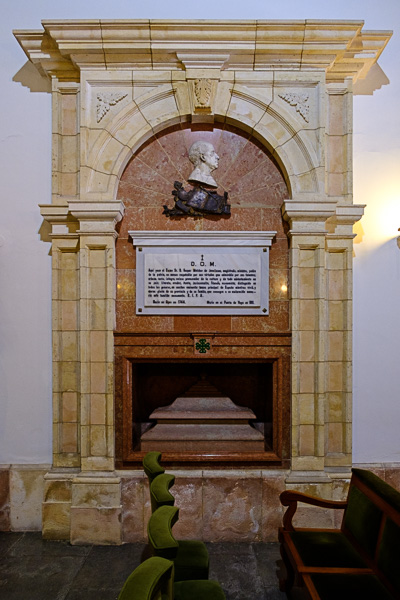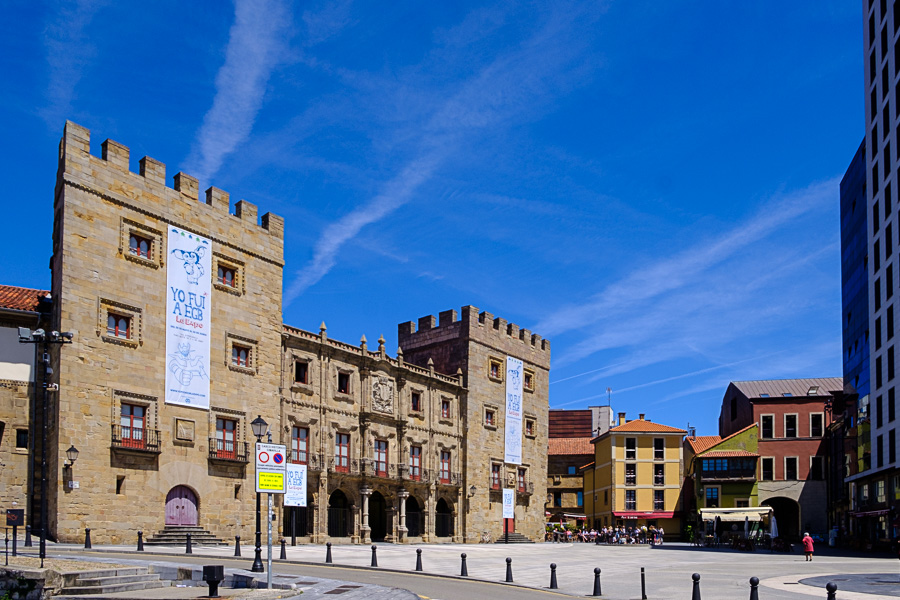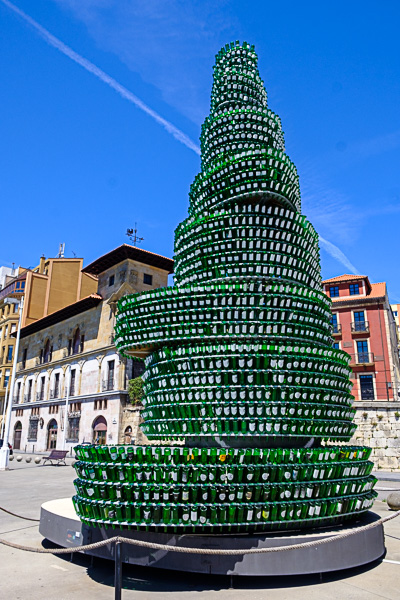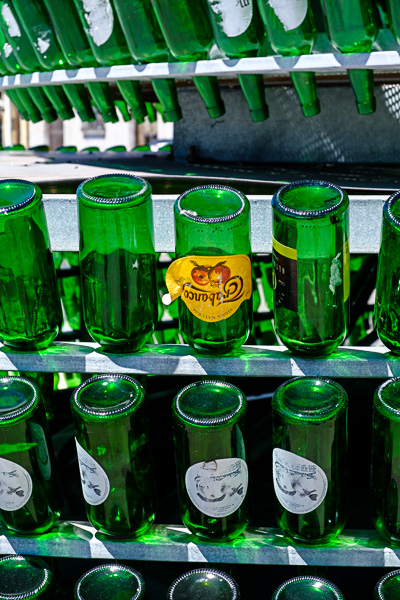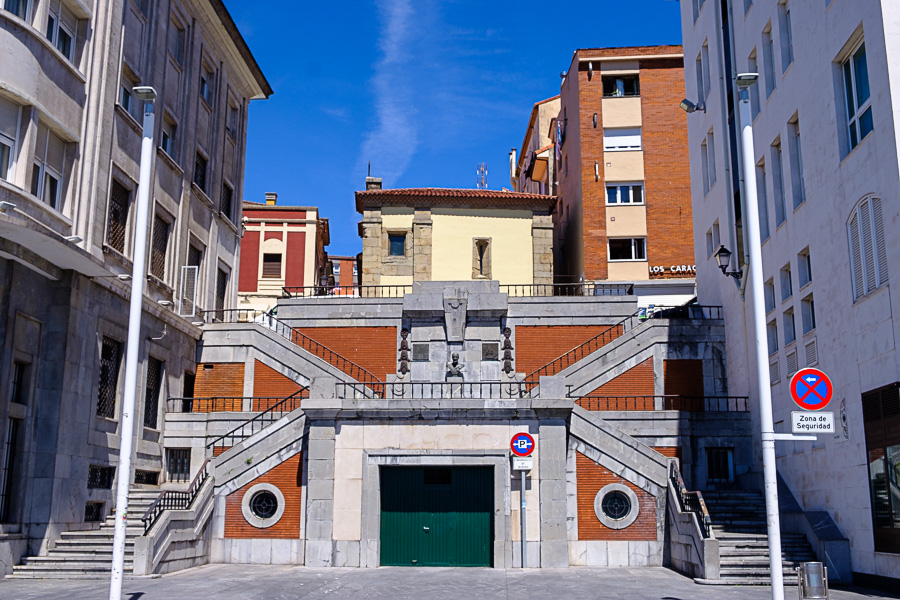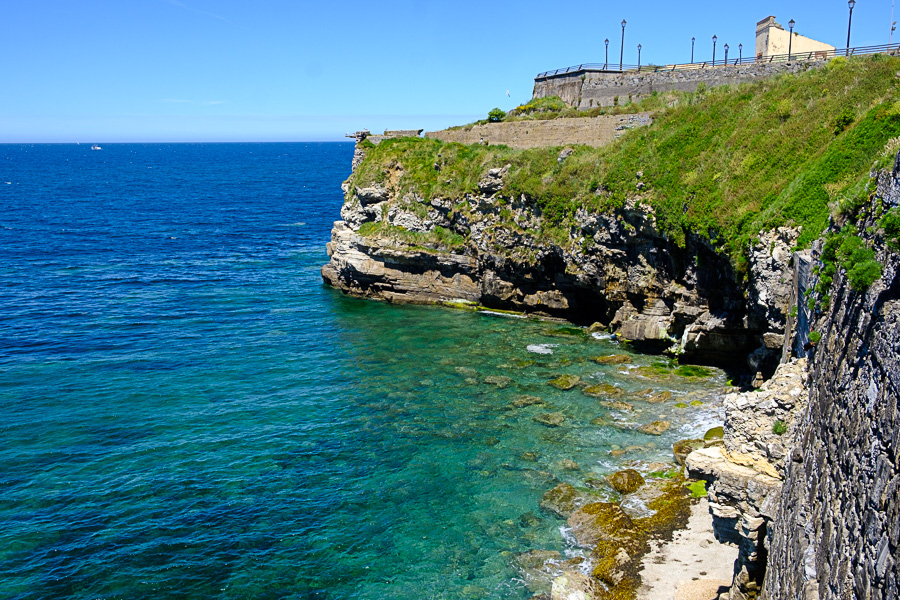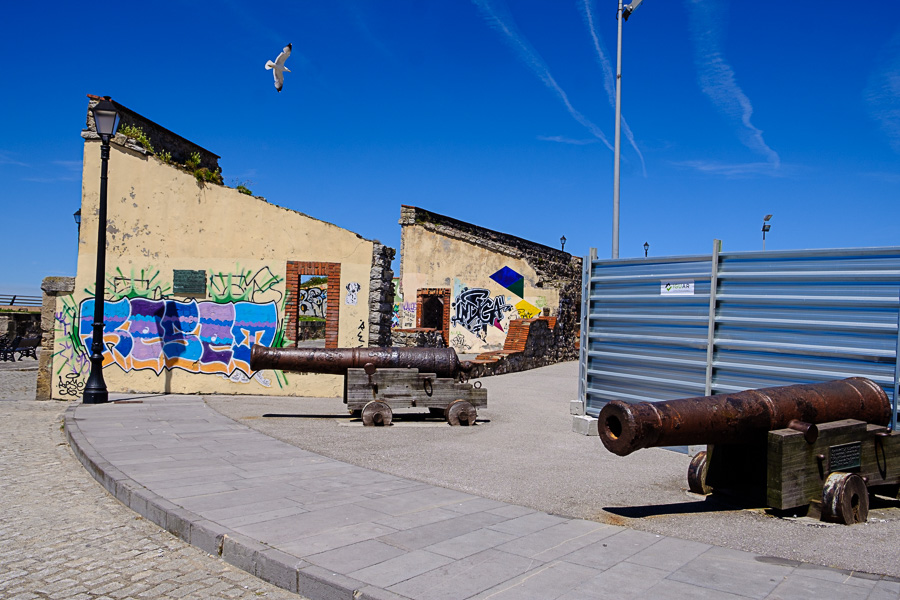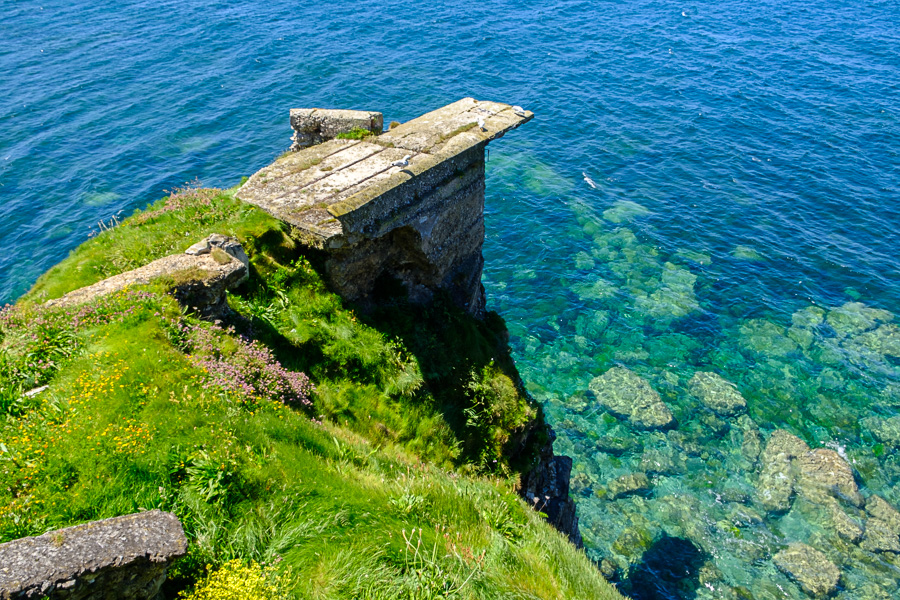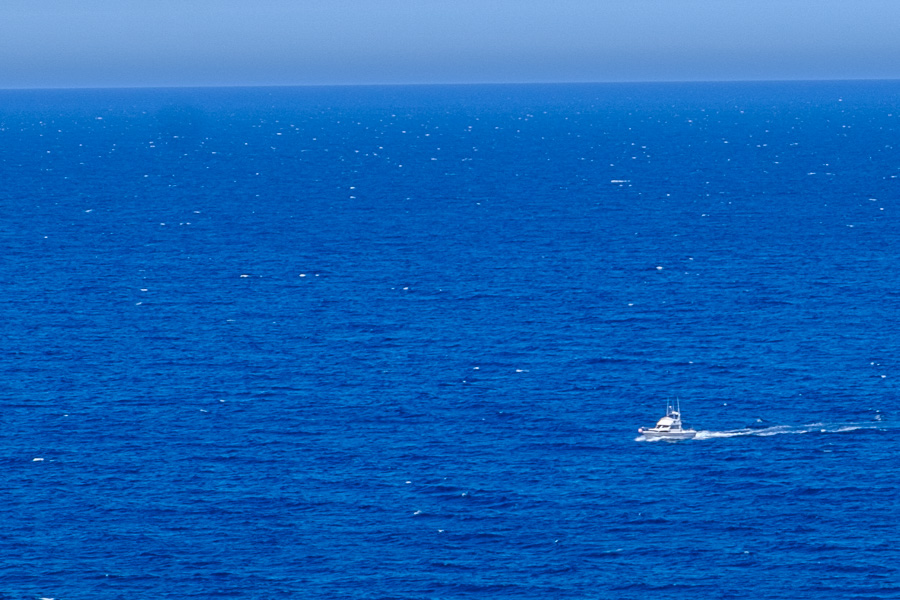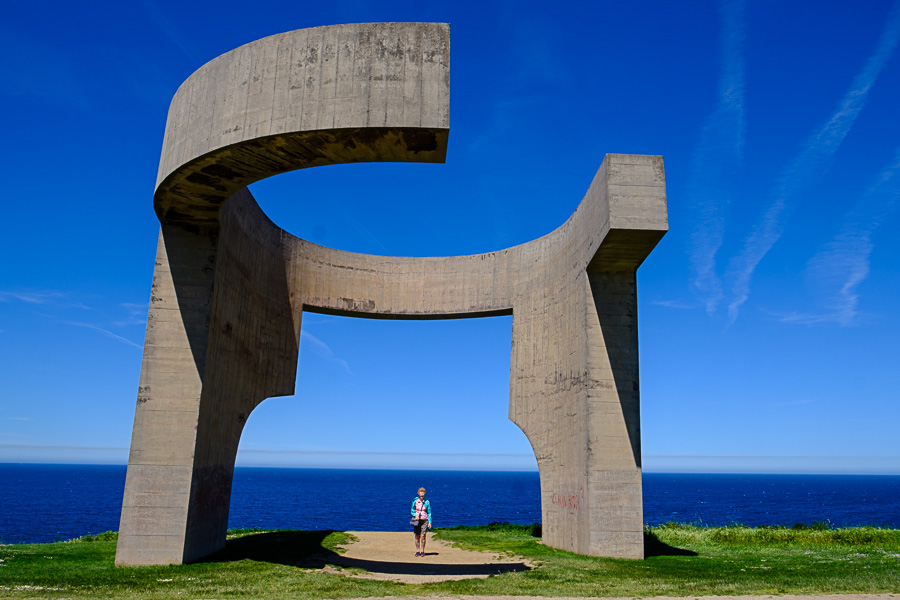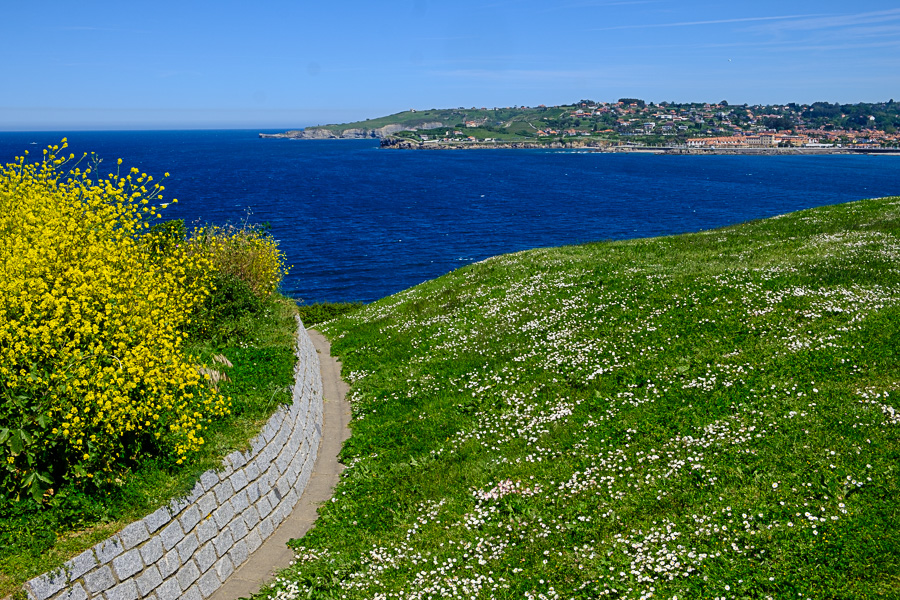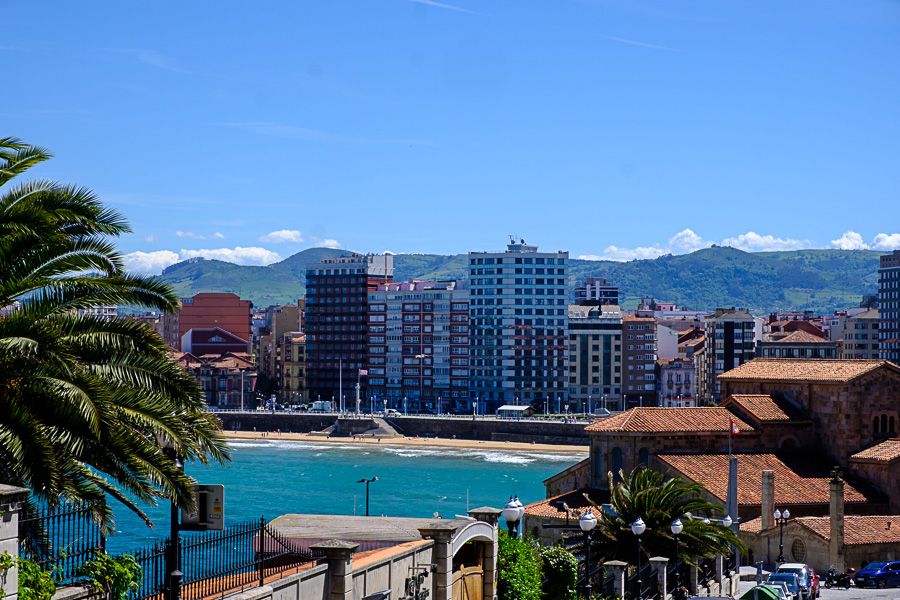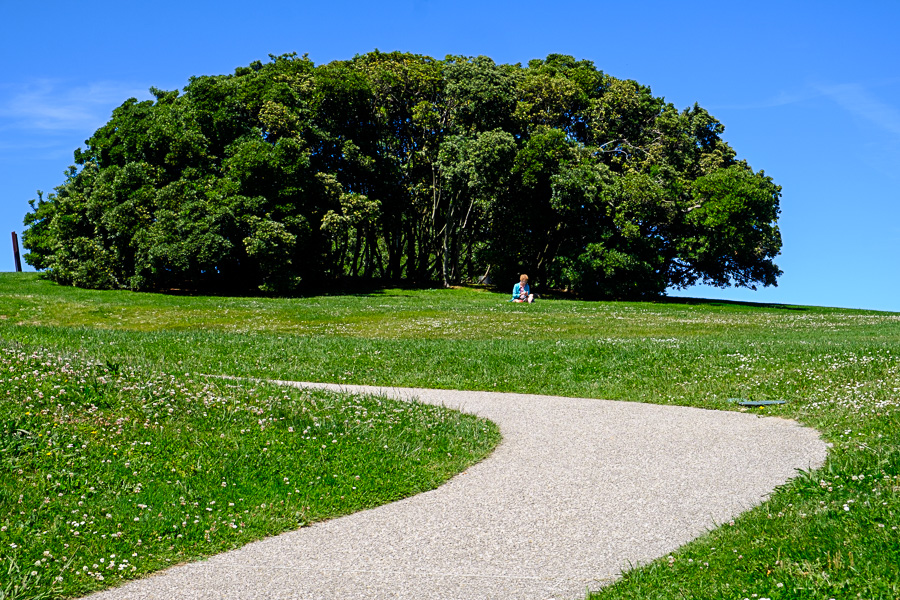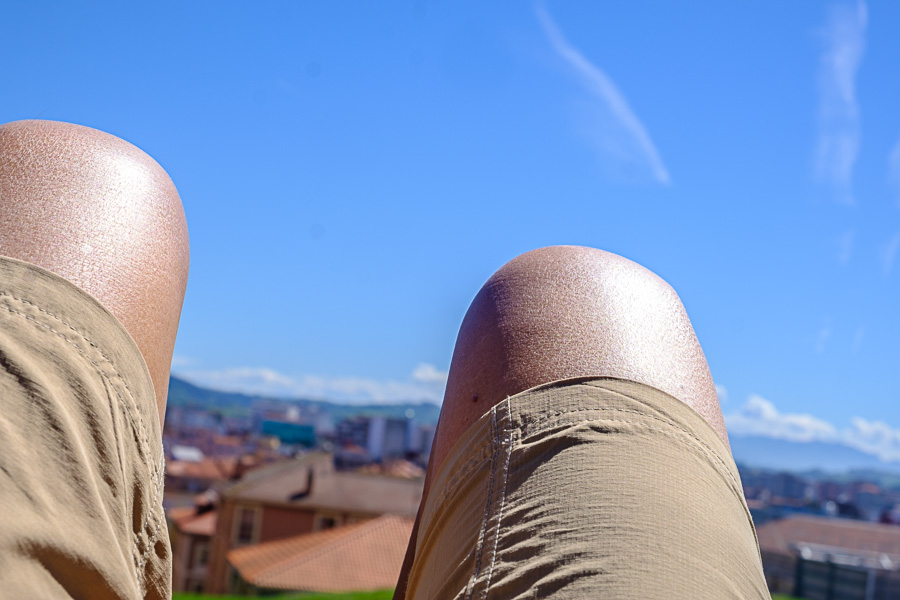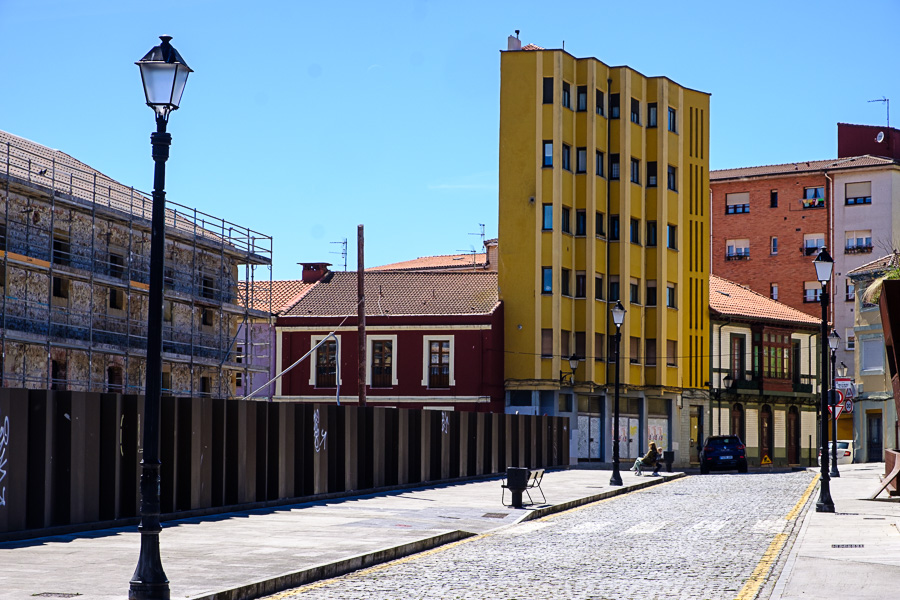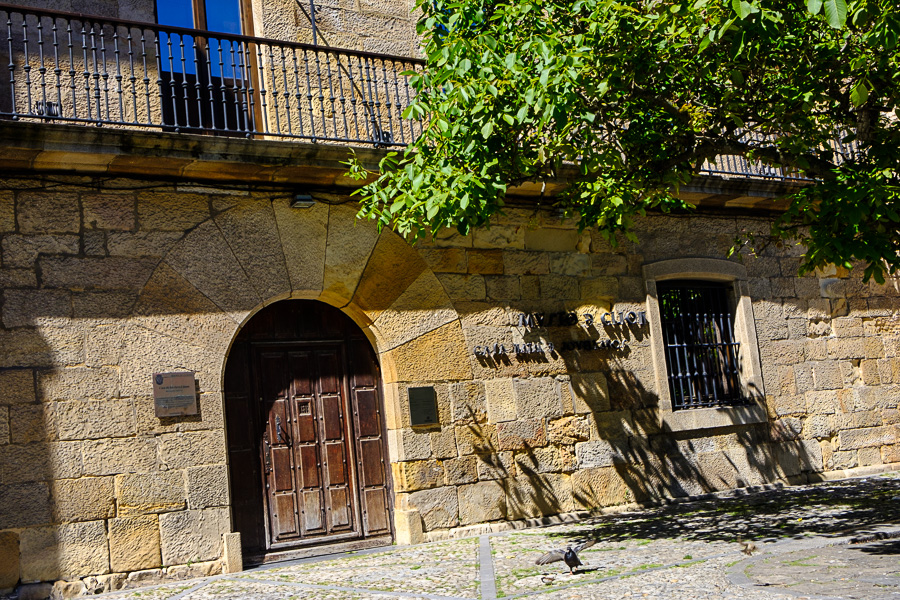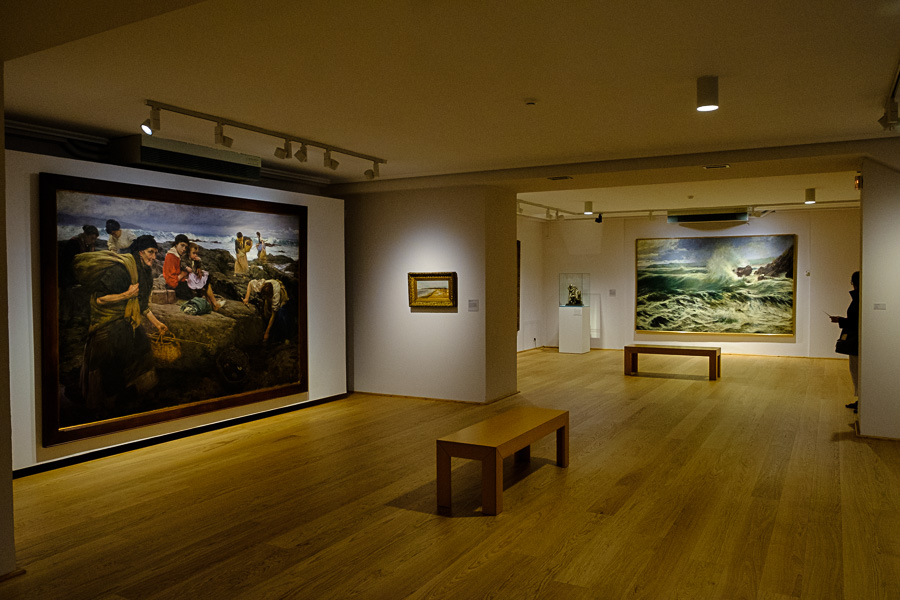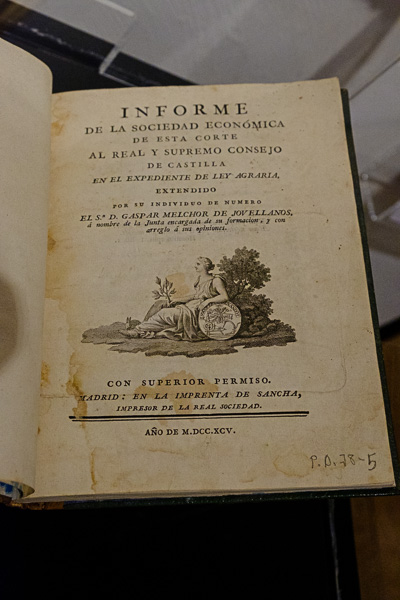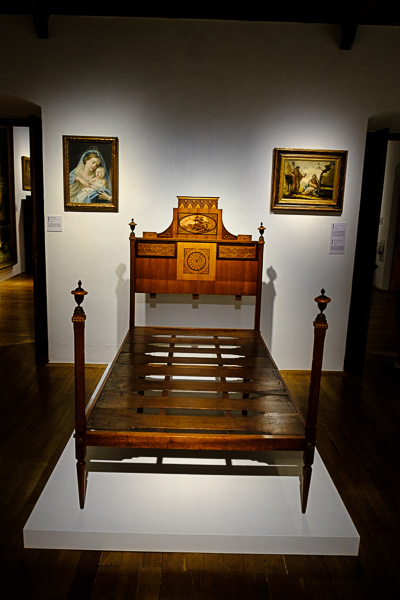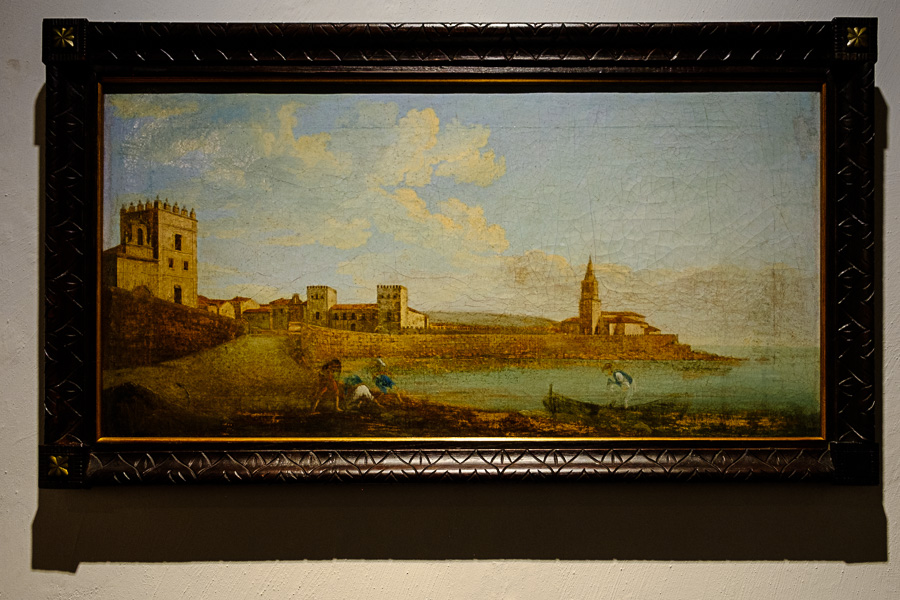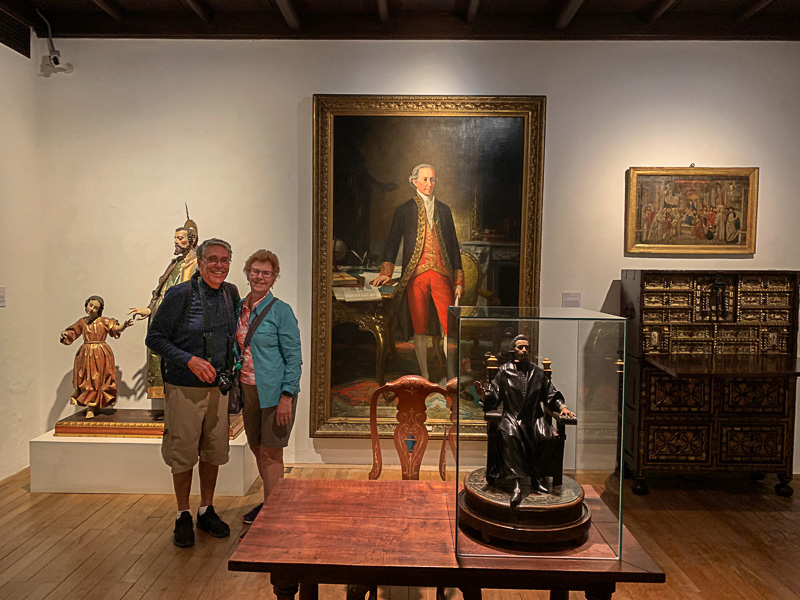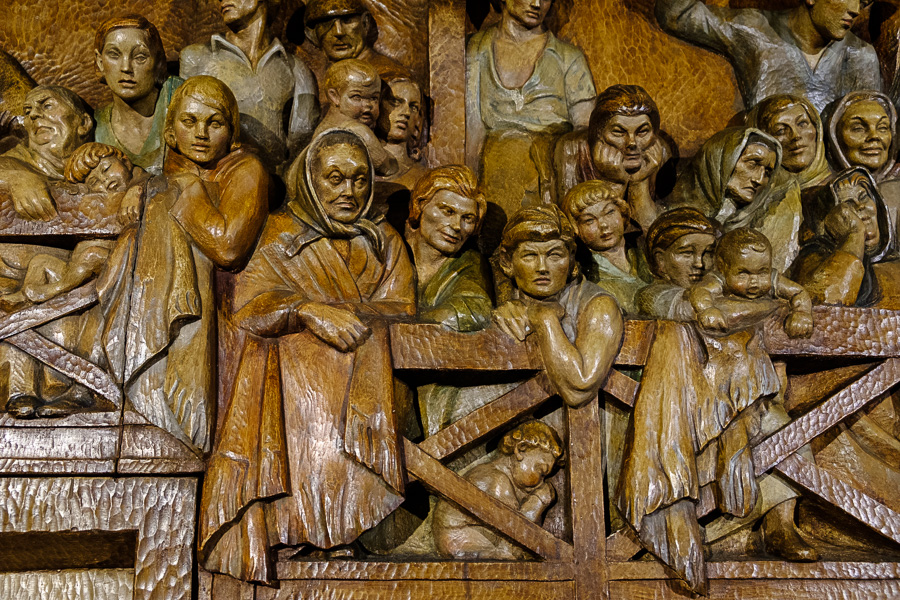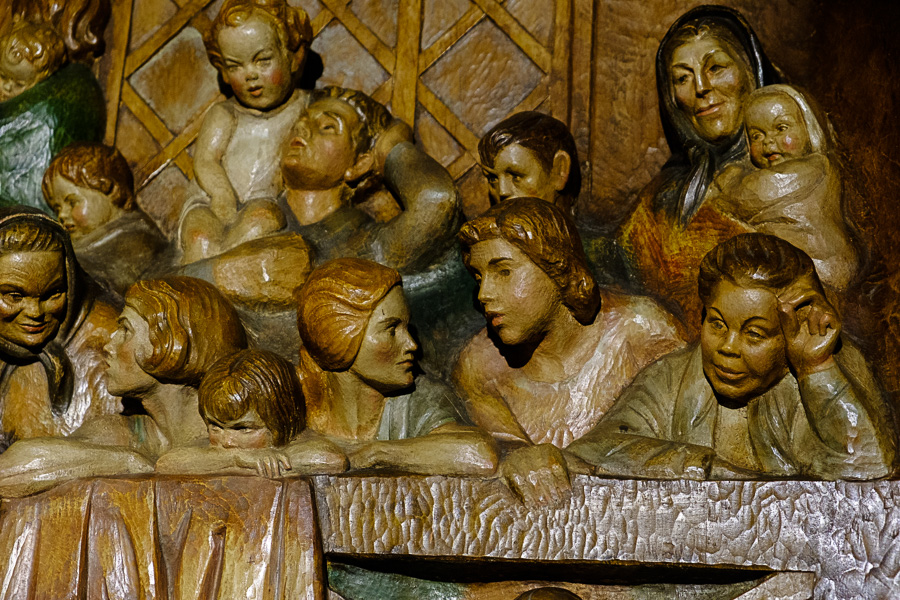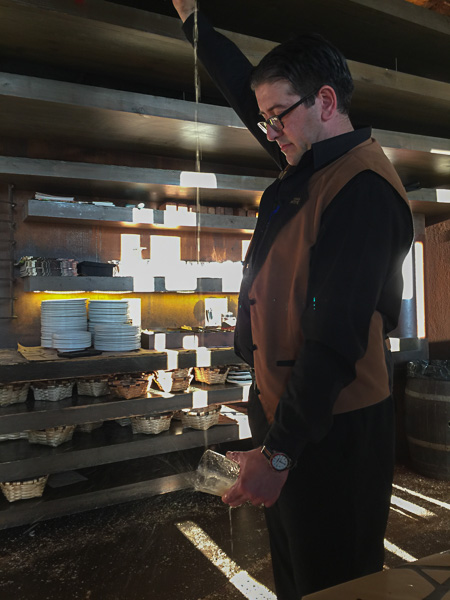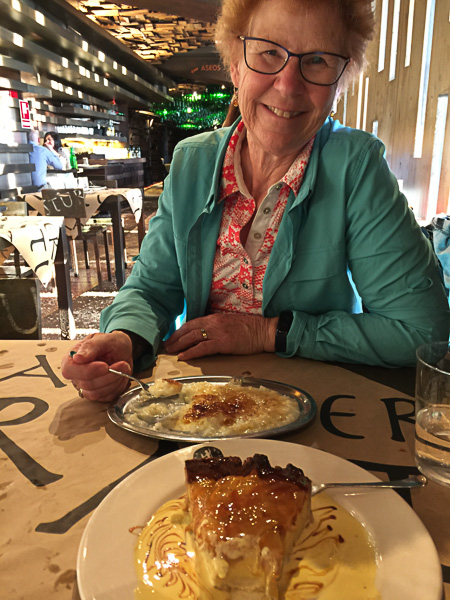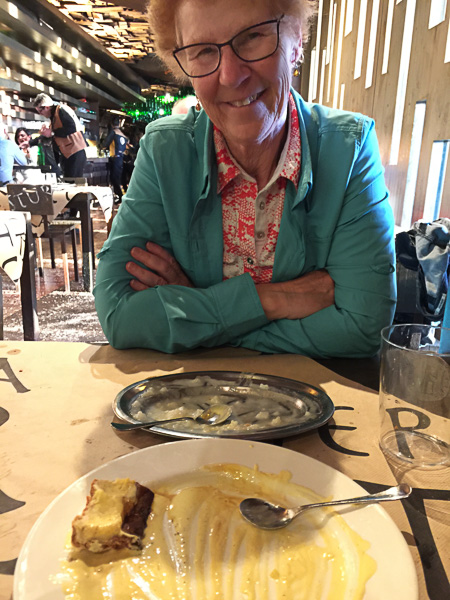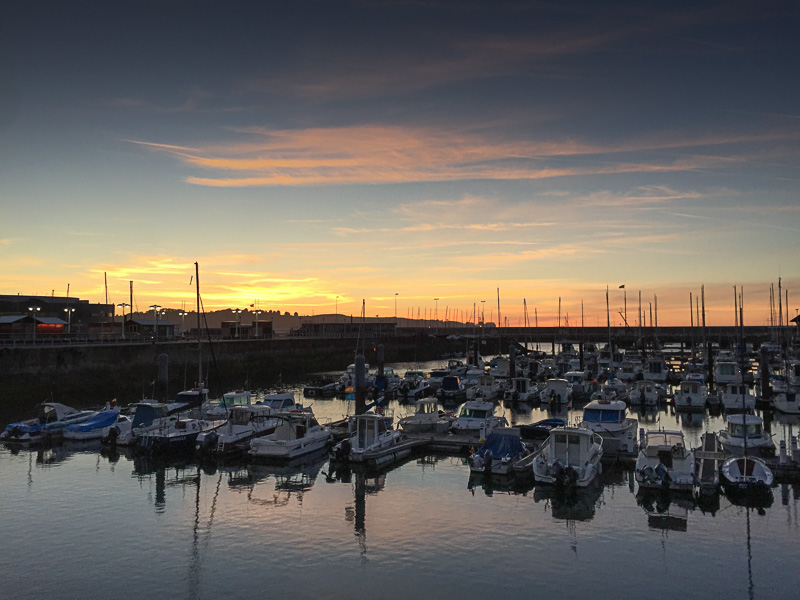We were up late carousing in Santiago de Compostella so we weren’t on the road until 9:30 or so. We made it to Gijón after only a few missteps – I was honked at only twice – and found our hotel in the old section of town. If we had any common sense at all we’d stay out by the Interstate and miss all the downtown traffic. But what fun would that be?
Speaking of Interstates, the Autovia system of four-lane highways here in Spain is excellent, just as in Portugal. The limit is mostly 120 km/hr (72 mph), the roads are great, if a little smaller and a little twistier than back home. Spain beats Portugal in one respect: tolls. I think we only paid a toll once (6 Euros). In Portugal there is a toll charged at every on-ramp, and big bucks each time too.
Today we drove through hills and small mountains. Lots of pasture land on hill sides for grazing cattle and I suppose sheep. They also, as in Portugal, grow a significant crop of wind turbines. The wind was calm today they were dead still – I hope the old fossil fuel plants were cranking to make up the difference. Or maybe there are solar farms elsewhere; they’d do fine today. We had another perfect day – bright sunshine, low humidity, temps in the low 70s, I’d guess. We were warned of rain and thunderstorms by one source, another said highs in the upper 80s. Neither came true. In Gijón there was a strong breeze coming off the ocean, which kept things chilly.
I planned today’s stop in Gijon with one objective in mind: to see the birthplace of Gaspar Melchor de Jovellanos, the 18thcentury statesman, economist, philosopher, prolific author – a leading figure in the Spanish Age of Enlightenment. As I mentioned earlier, Jovellanos was the subject of Mom’s PhD dissertation, which was published in Oviedo, Spain (about 30 miles south of Gijón). The hotel I chose is only a five minutes’ walk to Jovellanos’ birthplace. I googled the route and was warned, much to my horror, that the museum would close at 3:00 – 45 minutes from now. We woofed down some cheese and crackers and headed out. In fact, it turns out that the museum closed at 2 PM but would reopen at 5 PM. As in much of Spain, things tend to shut down for the afternoon and stay open later than we’re used to.
We found next door to the home a small chapel, Capilla de Nuestra Señora de los Remedios (chapel of Our Lady of Remedies). The chapel was a 15thcentury waypoint and hospital for pilgrims on the northern route to Santiago de Compostela. It now holds the earthly remains of Jovellanos.
While we waited for the museum to open, we walked along Gijon’s waterfront promenade with great views of the harbor and the ocean and the city. We even stopped for a rest on the park grass. I may have dozed off for a few minutes while Judy typed on her iPhone. You’ll see the results of her ruminations soon. We then had time for only a quick ice cream bar before walking across the plaza to the museum. While sitting with our ice cream we noticed that the city, which until moments before was a ghost town, suddenly burst to life. Kids got out of school and adults were strolling the streets and sitting in sidewalk cafes having a glass of wine or coffee.
The museum is today mostly a very fine art museum with works from the 16thcentury to modern times. The Jovellanos portion is contained in two rooms and has a few personal items and a large portrait that was done in the 19thcentury. I tried to explain Mom’s book to the docents, but they knew little of Jovellanos; they were mostly focused on the art exhibits. I think Mom would be pleased to see the facility being used as an art gallery.
When we drove into town, I wondered if this was a silly wild goose chase. I knew virtually nothing of what we would find. I simply saw a reference to the museum and said, “That’s it.” Now that we’ve been here, I’m awfully glad we did. Being in the museum, and especially the chapel and standing next to his tomb, I felt a real connection to Mom and her scholarship.
Judy chatted with a lady in the museum, and I her husband, from Tampa. We had a great time talking about Florida and our experiences here in Spain. He used to own an ocean front property in Indian Rock.
Near the museum we found a large, tall sculpture made from apple cider bottles. It seems that sidra is a passion here in the Asturias region of Spain. It’s not like what we think of as cider; this is fermented and apparently packs a real kick. As soon as we’re done with our evening typing, we’re off to a nearby restaurant recommended by the museum docent. Full report to follow.
*** 10:30 ***
We went full monty with the Asturias grub tonight and we’re glad we did.
The big question mark was the sidra – what we would call hard cider although this stuff was more refined than what we get when the apple cider jug sits out too long. The docent warned us to just try a sip. We went for a full bottle. Half the fun is watching the waiter pour it holding the bottle as high up as he can reach into the glass held as far down as he can reach. See the picture.
We ordered the Fabada Asturiana for Judy. The waiter warned us: “big serving!” so we split it. Wise decision. It’s basically a bean stew with pork and two kinds of local sausage. Delicious. Then we tried out the local desert favorite: the burned rice with milk, which in deed did have a smoky flavor to it. We added a totally unneeded tarta – a crème Brule pie with apples on top. Thankfully, the Sidreria Tierra Astur is a 20-minute walk from the hotel so we at least made a dent in dinner calories.
Tomorrow we’re off to Bilbao and the Guggenheim Museum, designed by Frank Gehry. What else? Who knows; we’ll see.

